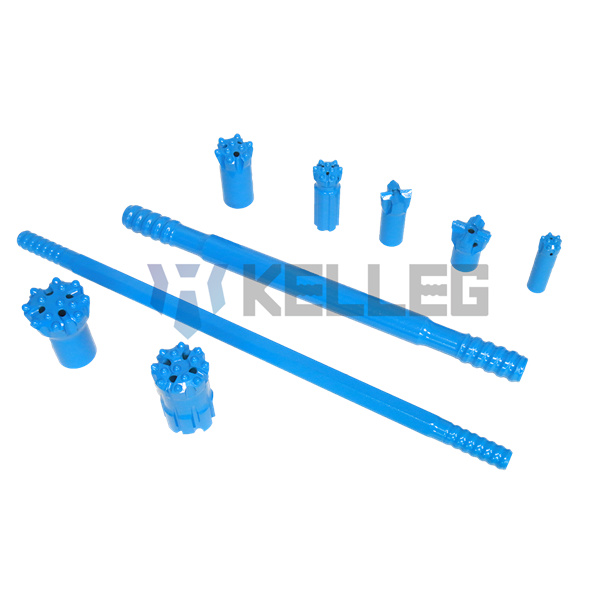2020 官网升级中!现在您访问官网的浏览器设备分辨率宽度低于1280px请使用高分辨率宽度访问。
Rock drilling tools are necessary consumables in mining, tunnel, and other construction operations. Because of the harsh operating environment, their service life will be affected, especially the corrosion damage after the action of mineral water in the drilling process.

The process of corrosion of rock drilling tools
In the process of rock drilling tool manufacturing, such as forging, machining, heat treatment, etc., the non-uniform metallographic structure is produced in the temperature transition zone of the local hot working part. It causes certain tissue stress and residual tensile and compressive stress. Because of the influence of many factors, there are congenital metallurgical defects on the surface of the hollow steel. These metallurgical and processing defects are all soaked in mineral water, resulting in corrosion pits on its surface under the joint action of impact stress. The cyclic stress continues to act, and the bottom of the corrosion pit further forms a crack source, and cracks grow up. The two sides of the crack collide and rub with each other during the drilling. At the same time, the cracks formed first withstand the corrosion longer, the color is darker. The cracks formed later are corroded for a short time and have bright colors. Therefore, the fracture surface of the rock drilling tools generally presents the characteristics of conchoidal corrosion fatigue.
Methods of anti-corrosion treatment of rock drilling tools
1. Improve the smelting quality of hollow steel and reduce the non-metallic inclusions in the steel as much as possible.
2. Improve the rolling quality, reduce or eliminate various surface defects as much as possible, and promote the geometric structure, dimensional accuracy, and surface state of the hollow steel to meet the technical requirements.
3. Eliminate micro-cracks and adhesive to corrosive dirt on the inner wall of the flushing hole.
4. Carry out anti-corrosion treatment on the inner and outer surfaces of the rock drilling tools.
Anti-corrosion technology requirements for rock drilling tools
Before the anti-corrosion treatment, it is necessary to clean the surface of the rock drilling tools. Once the surface has been cleaned, the anti-corrosion treatment must be carried out in time to ensure quality.
When performing anti-corrosion treatment on the inner and outer surfaces of rock drilling tools, the purpose is to create a coating to isolate the metal from corrosive substances such as mineral water and avoid corrosion fatigue. Therefore, the anti-corrosion film must have sufficient strength and toughness. Moreover, when the rock drilling tools are bent or cracked, the anti-corrosion film is not destroyed under the scouring of pressure and flowing mineral water. The process is simple, easy to operate, safe, and reliable, and the production cost is low.
To sum up, when the above technical requirements are complete, the anti-corrosion treatment of rock drilling tools is meaningful.
With the development of the economy, many mines, tunnels, and other construction scenes need more high-quality drilling tools. Corrosion resistance, the ability of metal materials to resist the corrosion and damage of surrounding media, is one of the essential characteristics of high-quality rock drilling tools. Although rock drilling tool manufacturers at home and abroad have carried out anti-corrosion treatment on rock drilling tools, the market development is dynamic. When manufacturers continue to understand market trends, improve the level of anti-corrosion technology, and produce more and better rock drilling tools, Can they constantly meet market demand and improve the overall level of rock drilling tools.